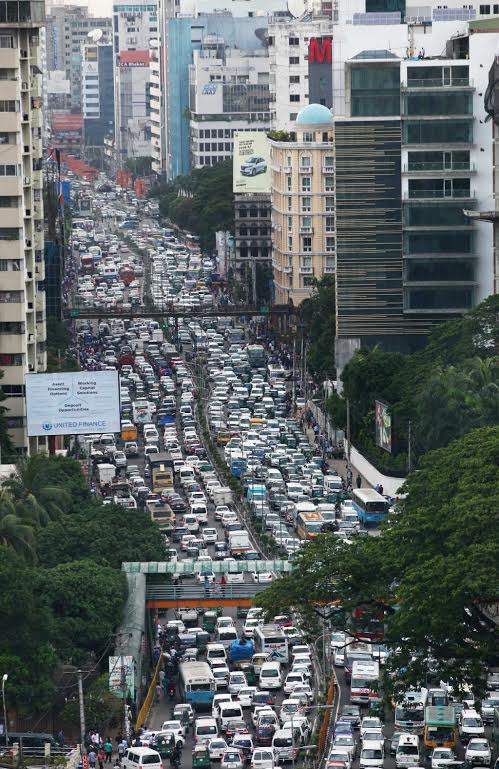According to a recent study, the road conditions in Bangladesh have a much more significant impact than estimated before.
The research was unveiled by the Accident Research Institute (ARI) of the Bangladesh University of Engineering and Technology (Buet) on Saturday at a conference.
Dr Moazzem Hossain, director of the ARI, unveiled the report and identified a number of disturbing trends:
- The urban transportation sector in Bangladesh developed without any major support/influence from the central government.
- There is a dearth of crucial personnel in planning, management, traffic operation, and safety jobs
- No real long-term public transport plans have been developed
- Urban transport in Dhaka is heavily deregulated and “messed up”
- Informal bus and other public transports fiercely compete motivated by profits
The ARI chief stressed that Dhaka’s urban transportation infrastructure needs an extensive overhaul by the government. He noted that the everyday congestion is not terminal, but rather a nagging problem which could be just as easily solved with dedicated initiatives.
|
Congestion issues
|
|
1. Reduced effective road width
|
|
2. Buses competing on the roads
|
|
3. Jaywalking pedestrians
|
|
4. Average public transport speed 5kmph, same as average walking speed
|
The report also recommends that the road priority should only be given to the prime minister and the president, along with emergency services, but not to any other VIPs.
|
The economic impact of Dhaka traffic
|
|
1. Five million work hours lost annually to traffic congestion
|
|
2. Tk37,000 crore is annually lost due to the traffic condition
|
Dr Moazzem noted that with adequate traffic management and efficient public transportation, at least 60% of the losses could be recouped, amounting to Tk22,200 crore.
The study noted that traffic also has severe impacts on health and society.
For starters, sexual harassment on public transportation is fairly commonplace. There have been many cases of notorious rapes on moving buses.
Women, children, and the elderly face tremendous difficulties when riding public transportation due to cramped conditions and hasty vehicles.
Dhaka roads are lethal to pedestrians. A person on foot is 9.25 times more likely to be killed than a person in a rickshaw.
Three out of every four collisions in urban areas take place in the capital city where pedestrian fatalities are also around the same figure.
In comparison to other metropolis like Toronto, London, and Mumbai, Dhaka is sorely lagging behind.
|
Why the traffic system in Dhaka is ineffective
|
|
1. Dhaka’s transport responsibility is fragmented between DTCA, DNCC, DSCC, RAJUK, RHD, LGED, BRTA as opposed to one central regulatory body or multiple coordinating regulatory bodies
|
|
2. Absence of integrated public transport system
|
|
3. Lax enforcement of public safety in roads
|
|
4. Negligence towards encroachment by hawkers, construction, illegal parking, etc
|
|
5. Absence of manpower. Only 70 concerned employees were found among the agencies
|
|
6. No clear source of financing
|
|
7. Subsidies for public transports are absent
|
The study recommends the government incorporate an institution which will be solely responsible for all transport-related activities in Dhaka. This agency should also develop policies and plans, in addition to develop public transportation and dedicated bicycle and pedestrian networks to support standard public transport routes.
Furthermore, political figures like the transport minister or mayor can spearhead the initiatives and take the responsibility and be accountable to the public.
With the development of intercity terminals and interconnected transport networks, it is estimated that at least 100,000 jobs could be created.
